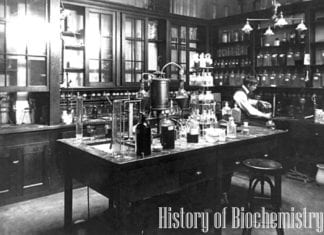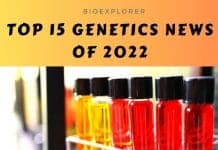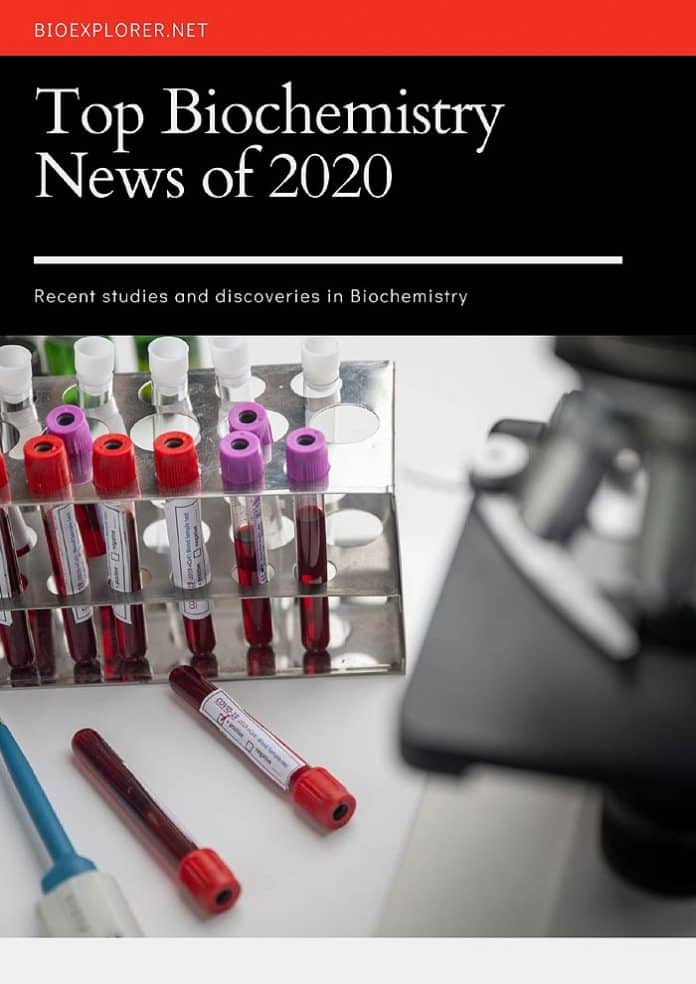
Top Biochemistry News of 2020: Biochemistry is one of the major contenders for the prize “Science of the year 2020“. Biochemists were awarded the joint Nobel Prize for developing the famous CRISPR/Cas9 method of genetic engineering.
Scientists from around the world used their expertise to help fight the pandemic. Biochemical methods helped find new potential drugs from unexpected places – from bacteria living in sea squirts to dark chocolate.
Top Biochemistry News of 2020
Hopefully, the pace of biochemistry science in 2020 would give us a significantly happier 2021, where we could have hope to battle some of the most concerning diseases.
1. Crisp gene editing awarded Nobel Prize in 2020: Emmanuelle Charpentier and Jennifer A. Doudna awarded a joint Nobel prize for CRISPR/Cas9 system discovery [Germany-USA]
Genetically modified organisms are one of the most discussed topics worldwide. Yet effective genetic modification is applied in all fields of research besides agriculture.
It is now possible to flexibly insert and delete genes of choice in a wide variety of cells. Yet this vast range and relative simplicity of editing genome are recent – the crucial discovery leading us on this road was made only in 2011.
- The development of the new approach has started from the discovery of a new molecule – tracrRNA in S. pyogenes by E. Charpentier.
- TracrRNA, or trans-activating CRISPR RNA, assists in creating so-called guide RNA, an essential part of the bacterial immune system.
- After her discovery, Charpentier collaborated with Jennifer Doudna to isolate other components of the CRISPR system in laboratory conditions.
- The experimental work of the two scientists led to creating CRISPR/Cas9 – based method of gene editing.
- This method is currently continuously improved and used in various research, agriculture, and other areas.
![]()
2. The spike of the pandemic getting filmed: COVID19spike protein visualized and studied [UK, July 2020].
The year 2020 was the year marked by the rapid spread of the novel coronavirus SARS-COV2 that causes COVID19.To fight the novel virus, scientists across the whole world tried to answer multiple questions at once. What does this virus look like? What makes it special? How has it emerged? What can we use to counteract it?
A team from the Francis Crick Institute in London, UK, has decided to focus on one of the structures of the infamous coronavirus to try to find answers to these questions:
- The researchers have chosen the spikes of coronavirus for their analysis.
- The spikes of SARS-COV2 are the instruments that help the virus invade cells.
- The scientists compared the spikes of the SARS-COV2 and its close relative – one of the bat coronaviruses.
- For the thorough molecular analysis of its structure, the team has used Cryo-Em microscopy.
- The overall structure of the spike protein in human and bat viruses were similar.
- It was discovered that the spike protein of SARS-COV2 was more stable compared to the bat virus one.
- The spike of SARS-COV2 could also bind more tightly to the receptor of human cells, ACE2.
- When the scientists looked more closely into amino acids situated in the part of the spike protein interacting with the ACE2 receptor, they found that this area has multiple substitutions compared to the bat virus RaTG13.
- Based on these findings, the specialists find it unlikely that SARS-COV2 has directly evolved from the bat virus.
- Possibly, there was another intermediate host of the virus where the bat variant has collected changes that enabled the efficient infection of human cells.
This discovery helps streamline the search of sources of the virus and potentially helps design antibodies to the spike protein.
![]()
3. A new type of antiviral molecule developed [Netherlands – Switzerland, December 2020]
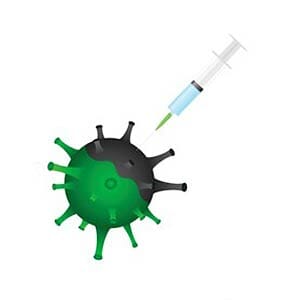
COVID19 pandemic does not mean medical specialists are spared the worry about other types of viruses. The flu virus is particularly dangerous. It can shift from a regular seasonal illness to a pathogen starting sweeping pandemics.
Fight against the flu is complicated because the influenza virus mutates quickly, so there is no universal vaccine. Antiviral agents that can treat it are also rare and have limited efficacy together with high toxicity.
An international team of researchers from Groningen, Netherlands, and the University of Geneva, Switzerland, have focused on developing an entirely new type of anti-influenza drug.
- The research aimed to manufacture a molecule that can block the activity of the virus and have low toxicity at the same time.
- Previously, the team has found two types of molecules – gold nanoparticles and β-cyclodextrins that can bend molecules of various types of viruses, rendering them incapable of adequately replicating.
- The researchers have investigated a group of molecules called acetyllactoseamines.
- These molecules are variations of so-called neuraminic acids.
- These neuraminic acids play an essential role in the recognition between cells in our body.
- The same structures are also used by bacteria and viruses, as they recognize which cells they can invade.
- In normal conditions, the flu virus can bind one of its proteins, hemagglutinin, to neuraminic acids located on the cell’s surface the virus can invade.
- Modified molecules also bind hemagglutinin, blocking it from binding to the cell surface.
- The new class of molecules could block various influenza virus strains.
- Some variations of the molecules could block viruses even when their solution was diluted.
- Experiments in mice have shown that the proposed agents decrease the amount of the virus in the body without causing significant side effects.
These new molecules could be critical in the fight against influenza. In addition, they can be used for developing affordable and effective antiviral drugs that are also safe.
![]()
4. The double-edged blade of amyloid proteins turns to slay influenza – Researchers develop synthetic amyloids to battle viruses [ Belgium, June 2020].

Amyloid proteins are formed when specific proteins transform into thread-like structures. The threads, in their turn, form clumps. These clumps can be causes of diseases, most notably Alzheimer’s. Other types of amyloids are used by certain cells for storing hormones or applied by bacteria toform biofilms.
Surprisingly, amyloids can have another proper function. A recent study has shown that beta-amyloid protein, the leading cause of Alzheimer’s disease, can prevent the herpes virus from replicating itself.
So, a team of researchers from Belgium has decided to use these molecules as potential protection against viruses.
- Based on previous research, scientists knew that amyloid protein has regions that can interact with specific viral proteins.
- When amyloids interact with such proteins, they form clumps, preventing the virus from making copies of itself.
- The researchers designed synthetic amyloid proteins with regions that could bind to proteins of influenza or Zika virus.
- The amyloid designed for the influenza virus could block the influenza A virus.
- It had no effect on influenza B, as the amyloid was highly specific.
- Both proteins have been tried successfully in mouse models.
This discovery is crucial as safe, effective antivirals that are easy to produce are currently in high demand.
![]()
5. Damage me, and you will die -a new type of chemicals that kill fungi discovered on damaged surfaces of plants [Switzerland, November 2020].

Unlike animals, plants protect themselves with chemicals. As they are attacked by animals feeding on plants or pathogens, the plants produce various chemicals that either kill or block potential foes.
A team of researchers led by Sylvain Dubey at the University of Lausanne, Switzerland, has investigated defense against fungi in a popular model plant organism, Arabidopsis thaliana.
- Initially, the researchers analyzed a group of plant chemicals called polyunsaturated fatty acids.
- These chemicals play various roles in plants and are significant components of outer cuticle and cell membranes.
- To understand the role of PUFAs that are part of plant cuticles, the researchers bred plant mutants that lacked certain acids and have damaged cuticles even at the early seedling stage.
- When the young plants were infected with fungi that specialized in attacking plants at this stage, the mutant plants had less fungal growth.
- The researchers have found out that the plants actively produced a compound that belongs to glucosinolates in the areas with damaged cuticles.
- These chemicals are often produced in plants of the cabbage family and are effective antifungals.
- When the researchers used some derivatives of the compound they found, they have discovered 13 of the 31 chemical variants were effective fungicides.
- The scientists hope to develop safe, natural fungicides based on their studies.
Suggested Reading:
History of Biochemistry
![]()
6. Mining sea invertebrates for medicine – a potent antifungal was found hiding inside the sea squirt [USA, 2020].
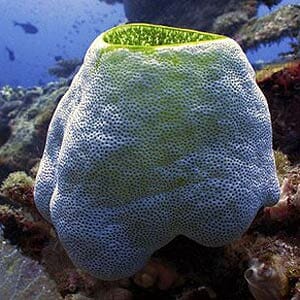
Initially, antibiotics were discovered in mold fungi and soil bacteria. These agents were produced to kill microscopic competitors in the neighborhood.
Humans took advantage of this strategy to kill their own parasites. Currently, soil bacteria of the group Actinomycetes provide multiple new agents that could be used in treatment. Yet, most of the compounds soil bacteria can produce are already found and in use.
So, the interdisciplinary group of scientists at the University of Wisconsin – Madison, USA, has turned to another possible option for new chemicals – the sea ecosystem. Their goal was to find Actinomycetes bacteria in marine organisms.
- The researchers have isolated multiple species of actinomycetes in various organisms, including the sea squirt.
- More than 1, 500 species of actinobacteria were isolated, yet only 176 species produced chemicals that could kill pathogenic fungi.
- The most potent compound was a complex molecule the researchers have called turbinmicin.
- The new agent could effectively kill 36 species of fungi that cause diseases.
- During the experiments in mice infected with fungal pathogens, turbinmicin helped kill the fungi without side effects.
- In the pathogenic fungus Candida auris that causes systemic candidiasis, turbinmicin blocks the protein Sec14p.
- This protein is crucial for reproducing the fungus, and by blocking it, the spread of infection is stopped.
Based on this initial research, finding new molecules applied by the team is proven valuable and effective. Currently, the team goes through the steps to get turbinmicin made into a patented, effective drug for humans.
![]()
7. Tea and chocolate to the rescue: chemicals produced by popular plant products can block an essential enzyme of the SARS-COV2 virus [USA, November 2020].

Flavan-3-ols are chemicals that are present in our food, mainly of plant origin. Some of the plants that contain these compounds are used in Ayurvedic medicine; recent studies have shown that even outside of herbal medicine, flavan-3-ols can have a beneficial effect on our health – for example, in case of metabolic syndrome or diabetes.
Some of them were even reported to block the activity of cat viruses.
The laboratory located at the North Carolina University, NC, USA, specialized in finding new therapeutic agents among chemicals found in food.
Considering the necessity to develop affordable antiviral drugs against COVID19, the team has investigated flavan-3-ols and proanthocyanins as possible means to combat the virus.
- The researchers have chosen an enzyme of SARS-COV2 called M.
- The virus uses this enzyme to make new copies of itself.
- The enzyme has a unique “docking” site where molecules-ships land.
- The team has tested 12 flavon-3-ol and proanthocyanin compounds found in green tea, chocolate, and berries against M.
- They have discovered that 6 of these chemicals interacted with the docking site and blocked the enzyme activity.
- When the researchers used extracts from green tea and muscadine grapes rich in all the compounds studied, these extracts also blocked the enzyme.
- The extracts from dark chocolate and cacao berries could not wholly block the enzyme yet slow it down.
This study shows that plants may have potential antiviral drugs that could help against COVID19.It is also likely that eating/drinking products potentially containing valuable chemicals, such as green tea, dark chocolate, grapes, and others, could help people fight against the infection.
![]()
8. Lighting up cell chemistry – scientists have found a new enzyme activated by blue light [Germany, May 2020].

For researchers, having easily regulated enzymes in the cells is something of great value. One of the most convenient ways is to switch necessary reactions on with the help of light. But, unfortunately, light-reacting proteins are pretty rare.
Recently, a research team at the University of Münster, Münster, Germany, has found a new type of enzyme that reacts to blue light:
- The newly found enzyme belongs to the broad group of proteins called flavoproteins.
- Flavoproteins contain flavin (a component of vitamin B2, riboflavin ) that can react to light.
- Most of the flavoproteins are either protected from light influence due to their structure or are engaged in reactions that cannot be applied in the lab for various reasons.
- The protein was found in the opportunistic bacteria Pseudomonas aeruginosa.
- This enzyme could transfer an oxygen atom to the target molecule only when it was under the influence of light and had an additional cofactor molecule present.
- The reaction this enzyme regulates was not seen before.
- The structure of the new protein allows it to be potentially modified for lab use.
The discovery can lead to developing artificial enzymes of this type to carry out the desired reactions for drug development, research, and biotechnology.
![]()
9. A combination of modern methods helped establish the structure of an important enzyme that is involved in making fats [USA, March 2020].
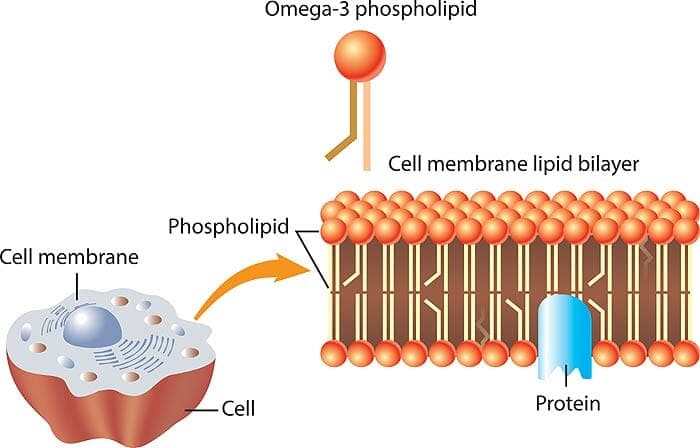
Lipins are essential enzymes that play two roles:
- Participating in one of the crucial steps of production of certain types of fat molecules called triglycerides.
- Co-regulating activity of specific genes in the cell.
The lipin enzymes and their function were discovered relatively recently, so their structure was unknown until now. The researchers from Stony Brook University in New York, USA, have used crystallography, mass spectrometry, and biochemical methods to determine the basic 3D structure of lipins:
- The researchers analyzed enzymes similar to human lipins in plants, yeast, and bacteria.
- They have found a type of enzyme that had a similar sequence of amino acids to human lipins.
- After finding a suitable type of enzyme, the scientists used an array of methods to determine its structure in crystal form.
- The approach has allowed seeing how the enzyme acquires the active form, which was previously unknown.
mutations in the genes responsible for lipin production led to various conditions that affect the liver, muscles, and the ability to store fats. The visualization of the protein structure was important for understanding how the enzyme works in normal conditions and mutations. This information can help with treatment in the future.
![]()
10. Breast milk can protect young children against obesity due to a special fat molecule [USA, November 2020].

Recent studies have established that breastfeeding infants may protect them from developing obesity later in life. As a result, a research team has decided to look closer at the composition of breast milk and how its components influence early development:
- The researchers have found a new compound in breast milk called 12, 13-diHome.
- This compound is produced after the breakdown of linoleic acid (omega-6) found in vegetable oils and other plant products.
- When infants drank milk with high levels of this compound, they had lower fat mass and lower BMI.
- The levels of 12, 13-diHome could be increased by exercise.
- The infants that drank milk with high levels of this natural chemical also had indicators that pointed to the so-called “brown fat” development.
- Brown fat is destroyed easier as it is intended as “energy savings“, unlike less destructible white fat.
This finding provides proof that prolonged breastfeeding brings considerable benefits to children. However, this study is only a start of research devoted to the subject of breastfeeding and preventing diabetes.
Due to possible essential benefits that could come out of it, this study is currently being supported financially by Harold Hamm Diabetes Center.
![]()
Biochemistry research in 2020 was naturally focused on antiviral and antifungal drugs that are currently of utmost importance considering the situation. Still, there were other exciting discoveries. For example, a new compound was discovered that can destroy the amyloid proteins forming during Alzheimer’s.
Researchers also turn to AI for suggestions about finding new medical agents – and computer analysis helps find new anticancer molecules. Another surprising protein was discovered in the stomach of mammals that acts as a mop to gather up microRNAs.
In general, it seems that there would be multiple new discoveries and insights in the coming years in this field. And-hopefully-armor against the pandemic as well.
![]()


